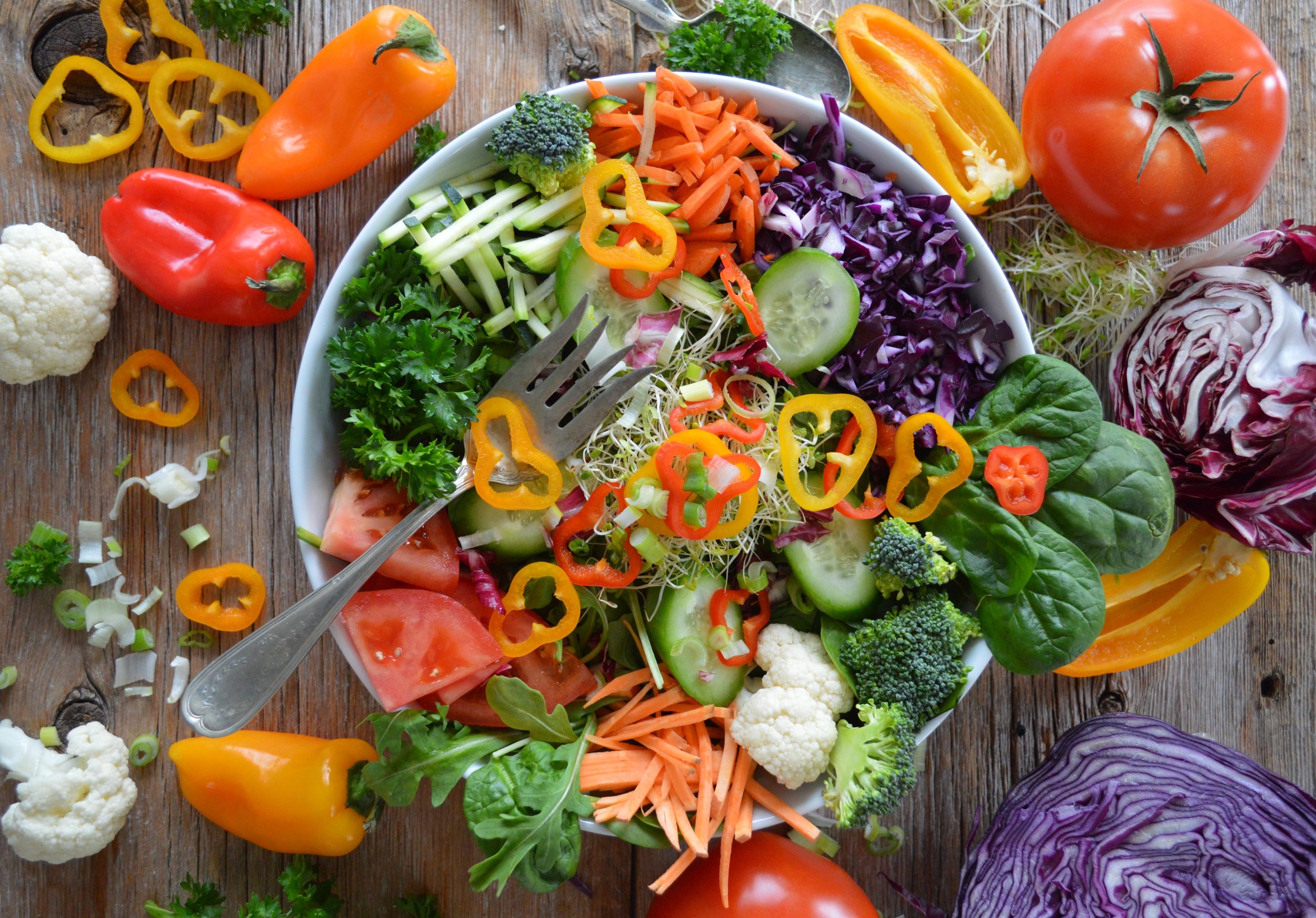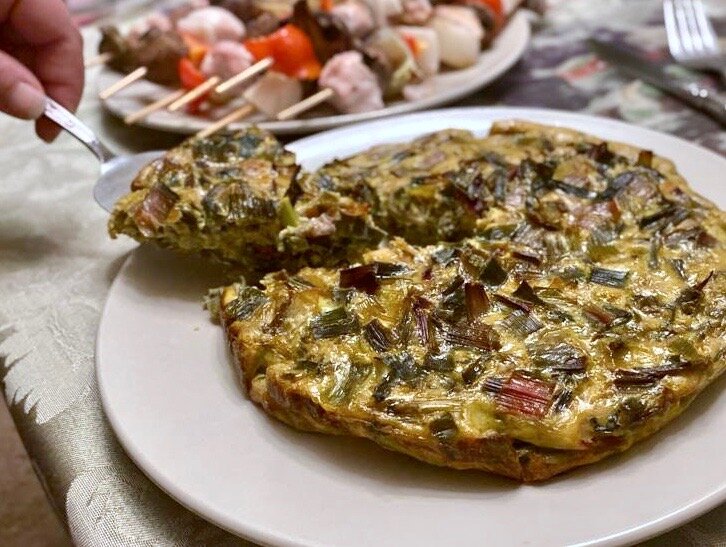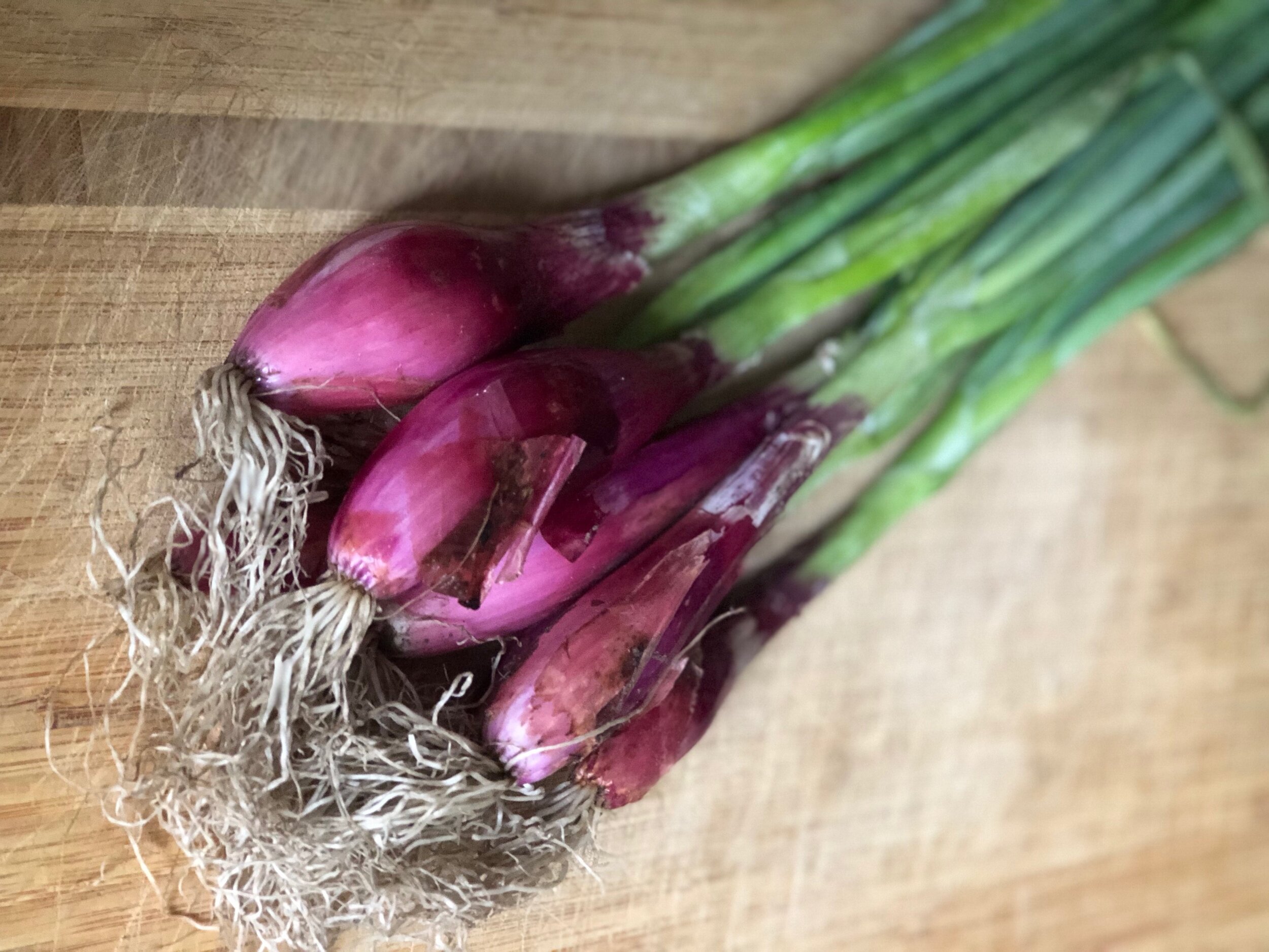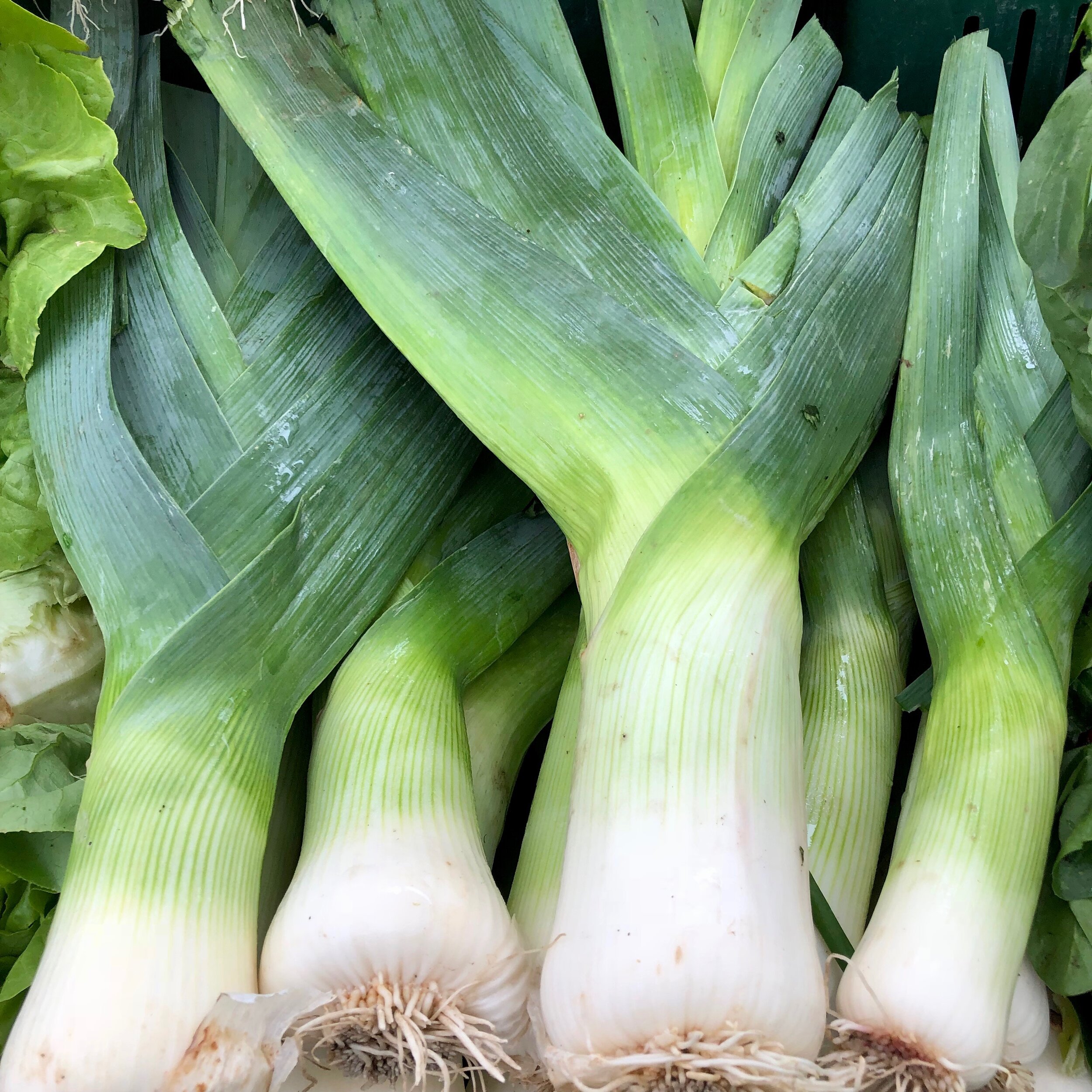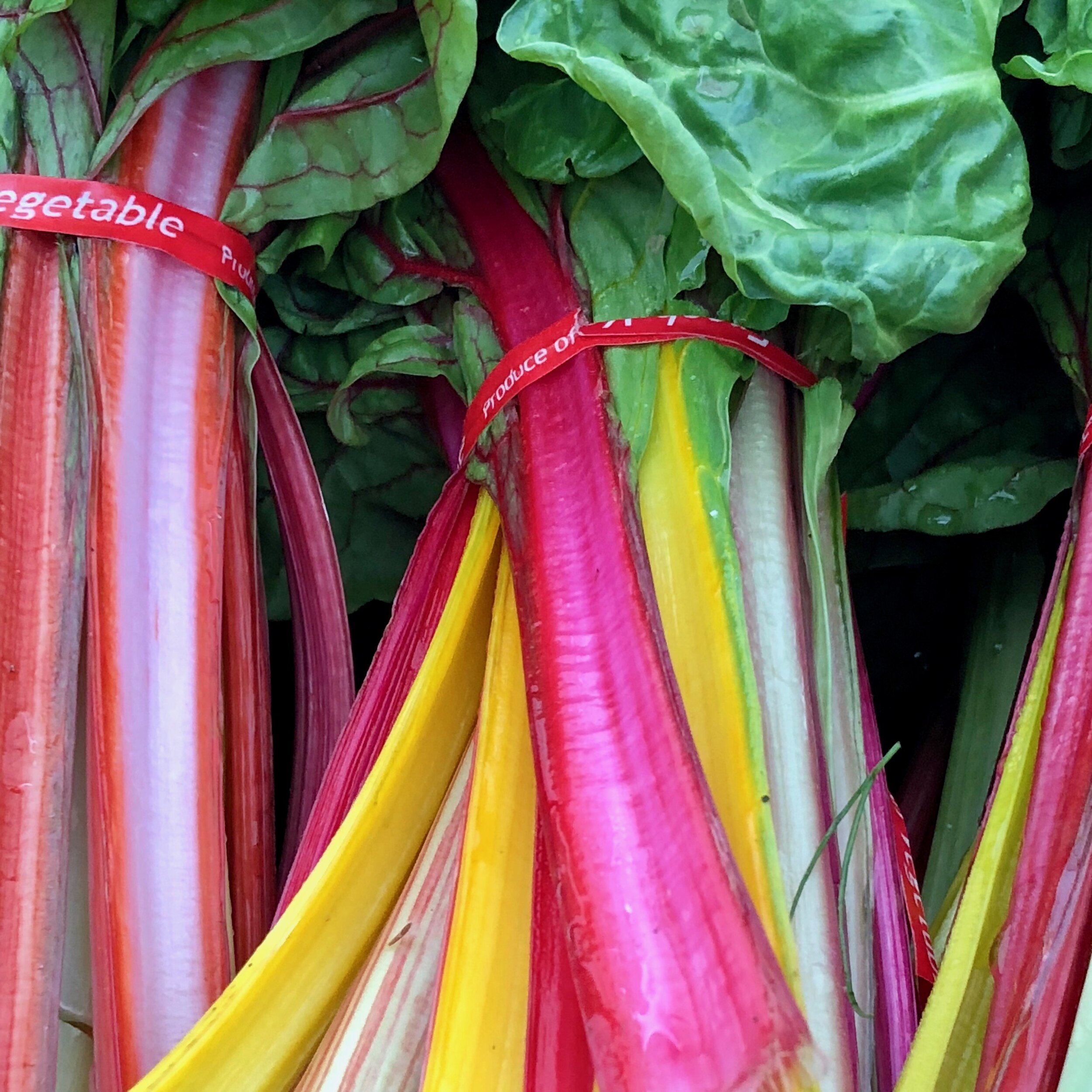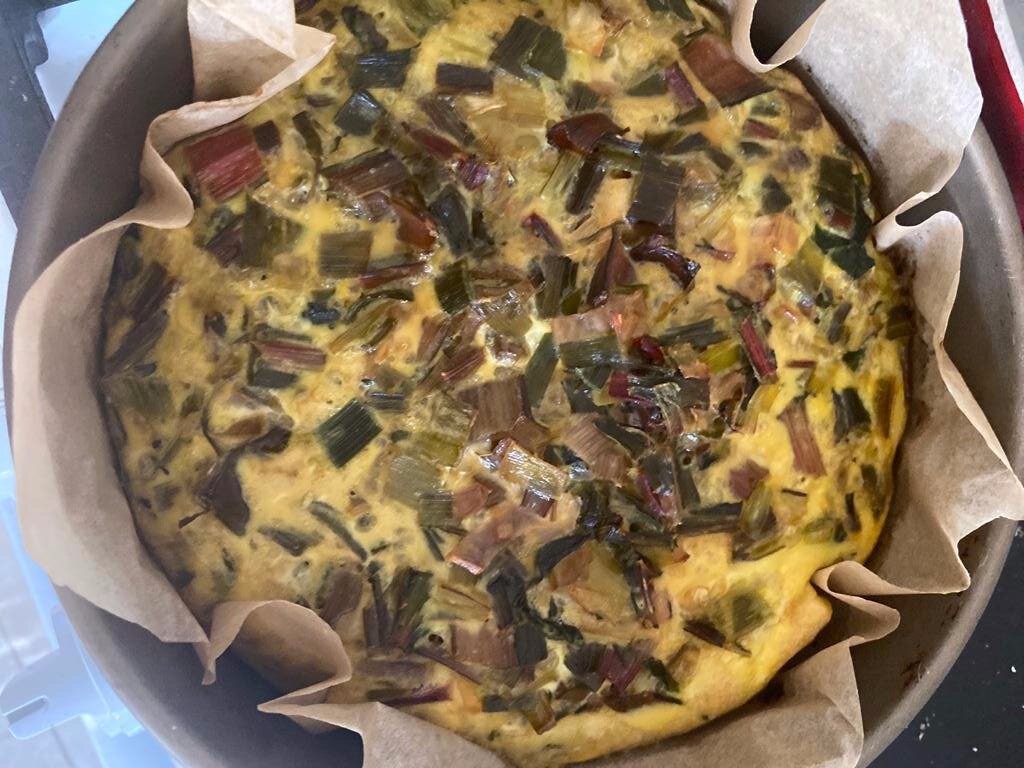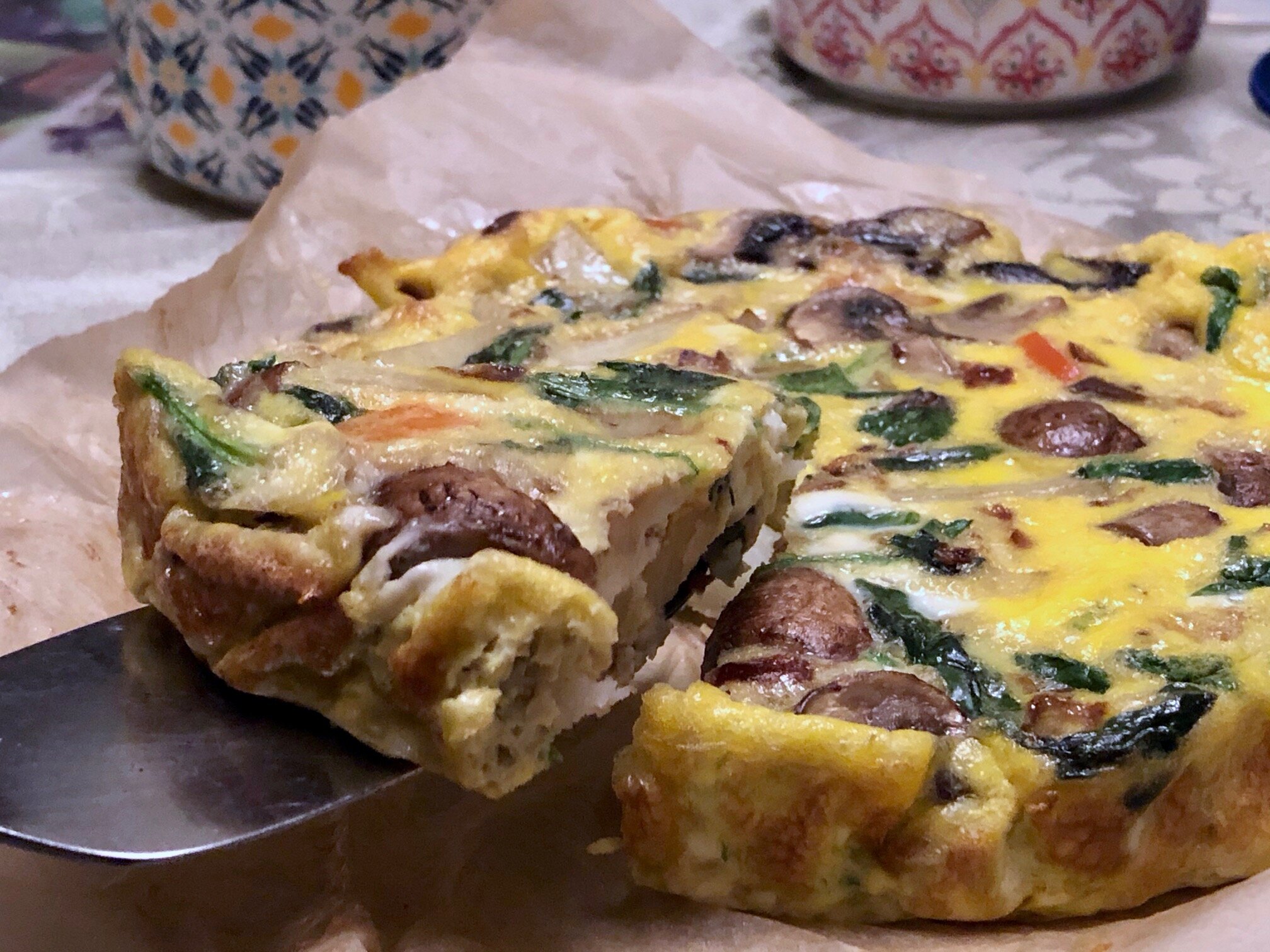Chard And Leek Frittata
/ACTIVE PREP TIME: 10 MIN
PASSIVE PREP TIME: 20 MIN
TOTAL TIME: 30 MIN
Today’s recipe is a frittata made with some exceptionally healthy ingredients.
Frittata: A Perfect Summer Side Dish
What, you may ask, is a frittata? A frittata resembles an omelet – but with some differences. Although both are made of eggs, an omelet is cooked quickly at high heat, while a frittata is cooked slowly over low heat. An omelet is served immediately while it is hot, while a frittata tastes great cold or at room temperature.
A frittata is also typically made with cream or milk, which is blended with the eggs into a custard-like consistency. Then the filling is usually made with whatever vegetables you have on hand. In the recipe below, we used a tablespoon of almond milk to keep it non-dairy.
Also, a frittata is meant to be cut into pizza-like wedges and eaten by several people. I suppose the best way to look at it is that a frittata is to an omelet like a deep dish pizza is to a standard flat pizza pie.
Use The Parts Of Veggies That You Would Otherwise Discard
Have you ever used leafy greens like chard, beets or kohlrabi for a recipe and wondered what to do with the stems? Rather than discarding them, you can throw them into this delicious frittata that makes an excellent side dish or snack food.
In addition to dark leafy greens, this frittata also contains leeks and torpedo onions. This is probably the healthiest frittata you will ever eat!
Onions, Leeks And Chard: What Is So Special About These Particular Vegetables?
Torpedo Onions
Torpedo onions are an heirloom variety native to Italy. They have a gorgeous purple-and-white color, a torpedo-shaped bulb and a sweet flavor. Nutritionally, they contain vitamin C, fiber, phosphorus, calcium and magnesium.
Leeks
Leeks are native to the Eastern Mediterranean, including Israel. They are the mildest member of the onion family. Although leeks are often interchangeable with onions and garlic, they have a distinct texture and and an earthy, mild onion flavor. Nutritionally, they contain very high amounts of vitamin A, vitamin C, vitamin K, folate and manganese.
Chard
Have you ever noticed that chard and beet leaves look very similar? This is true not just visually but also nutritionally. The reason is that chard is actually bred from beets – for its leaves rather than for its root.
Chard is a nutritional powerhouse of a vegetable. It contains high levels of vitamins C, K, E and beta-carotene, as well as calcium, manganese and zinc. It contains the amino acid-derived pigment betalain, which gives both beets and chard their signature reddish color. Betelain is involved in the body’s detoxification processes. Interestingly, although the color of vegetables with betelain is similar to that of vegetables containing anthocyanins, they are not related.
In this recipe, you can substitute beet or kohlrabi stems for the chard.
The Frittata Recipe
5 torpedo onions (although the torpedo onions are milder, you can also use green scallions)
1 average-sized leek
Stems from two packs of chard
5 eggs
1 Tbsp almond milk (homemade, if possible)
1/2 tsp garlic powder
1/8 tsp salt (or to taste)
1/8 tsp cracked black pepper (or to taste)
2 Tbsp avocado oil
The Instructions
Finely chop the leeks, chard and onions.
Place in a pan and sauté with avocado oil until soft (about 5-7 minutes).
In a mixing bowl, vigorously whisk the eggs and add in the almond milk.
Pour the leek, chard and onion mixture into the egg bowl, along with the powder garlic, salt and pepper, and mix thoroughly.
Place in an 8-inch round dish lined with parchment paper.
Bake in the oven at 350°F for about 20 minutes, or until the outside of the dish is firm but not too dry and the middle has a firm but slight jiggle.
What's wonderful about this frittata is that it can be eaten cold, in a lunch while at work or school. For us, it works best to make it toward the end of the week, when we’ve accumulated unused parts of vegetables that we might would otherwise not use.
The Frittata Is A Very Versatile Dish
As a frittata is really just an egg dish with various added vegetables, you could get quite creative with different options. For instance, you could also use combinations such as cherry tomatoes, basil and zucchini; tomato and broccoli; asparagus, parsley and smoked salmon; baby Bella mushrooms, white potatoes and bell peppers; or baby spinach, scallions and feta. The strength of this dish is its versatility.
A delicious substitute: mushroom, potato and pepper frittata

